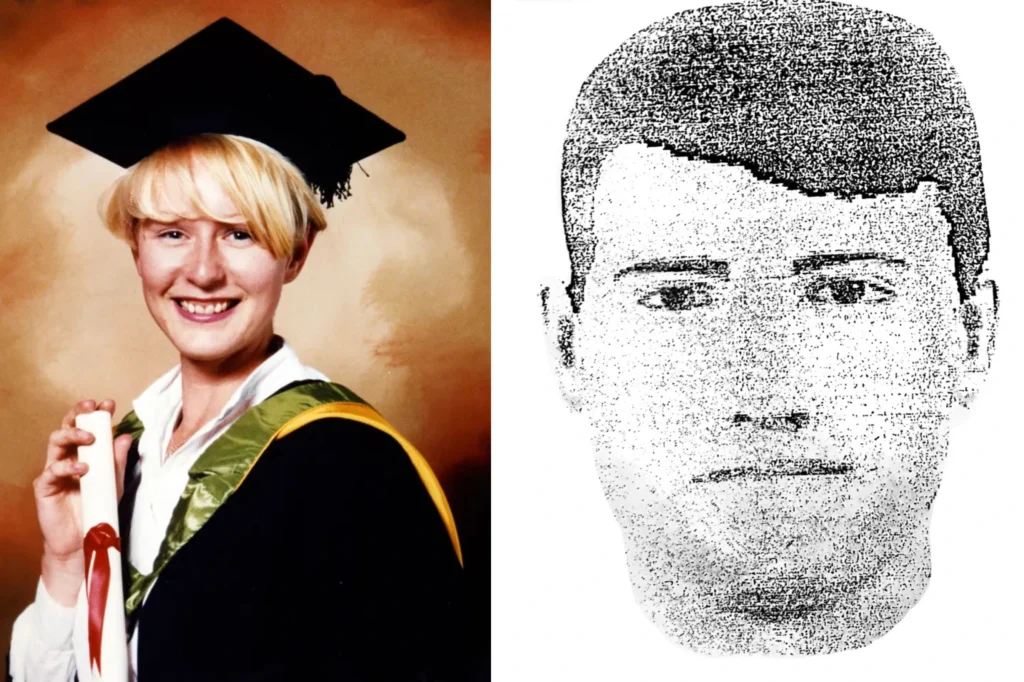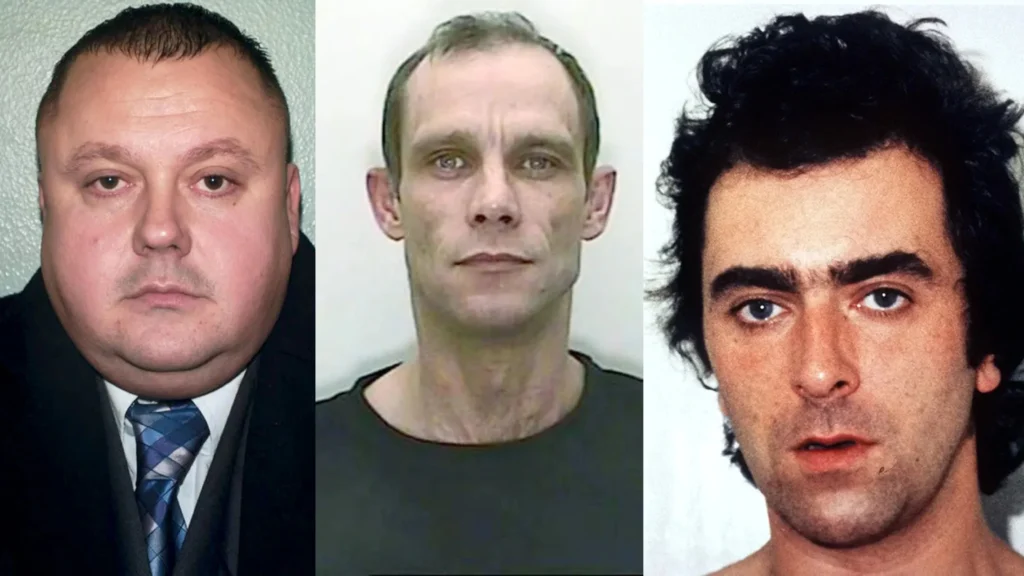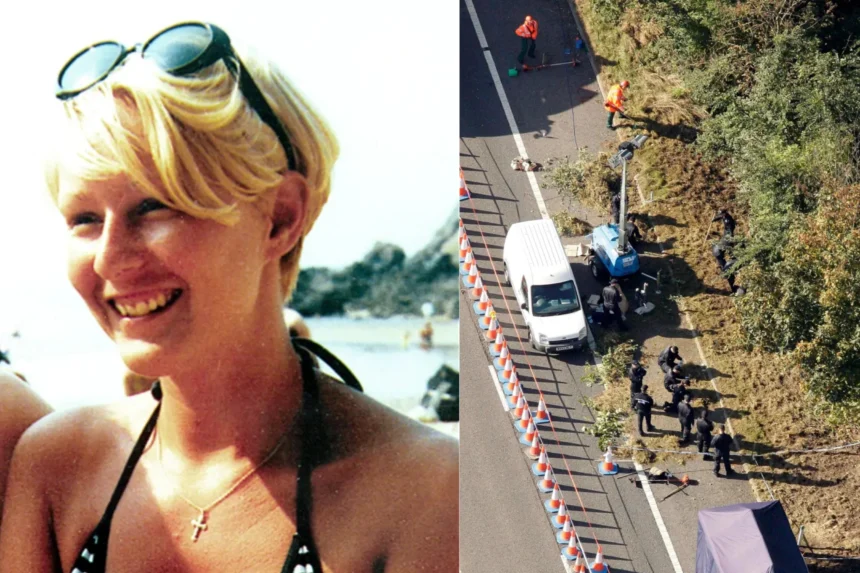On a night in June 1996, a 25-year-old woman named Melanie Hall vanished after a night out in Bath. She was bright, ambitious and just starting to build her future. More than thirteen years later, her remains were discovered stuffed into plastic bags and dumped near a motorway. To this day, no one has been held responsible for her brutal murder.
A Life Full of Promise
Melanie was born on August 20, 1970, in Wiltshire, England and grew up in the quiet town of Bradford-on-Avon. Her family described her as lively and full of energy, a “young, vibrant daughter” with a natural curiosity about the world. She was close to her parents, Pat and Steve Hall and her older sister, Dominique.
According to the BBC, education was a priority in Melanie’s life. After years of hard work, she graduated from the University of Bath in 1995 with a degree in sociology and psychology. Her mother said that graduating was one of Melanie’s biggest achievements, something she had worked very hard to earn.
After university, Melanie took a job as a clerical officer at the Royal United Hospital in Bath. She was living independently, enjoying her early twenties and seemed to have a bright future ahead.
Her father, Steve Hall, was a well-known figure in the community, serving as chairman of Bath City Football Club. To friends and family, Melanie’s life appeared stable and promising.
A Night Out Ends in Mystery

On the evening of June 8, 1996 Melanie was dropped off by her mother at her boyfriend’s house. She planned to spend the night there but later went out with him and another couple to Cadillacs nightclub, a popular spot in Bath.
What was supposed to be a fun night quickly became tense. Later reports said that Melanie and her boyfriend, Philip Karlbaum, got into a heated argument at the club. Witnesses claimed Karlbaum left after seeing her dancing with another man. Melanie, however, stayed behind, The Guardian reports.
The last confirmed sighting of her was around 1:10 a.m. on June 9, when she was spotted sitting alone on a stool inside the nightclub. From that moment, she vanished without a trace.
When Melanie didn’t show up for work the following day, alarm bells went off. Her parents, who knew their daughter’s habits well, grew worried and reported her missing on June 11. Police launched a full-scale search, combing through the city, interviewing hundreds of people and even dredging the River Avon. Despite their efforts there was no sign of Melanie.
Early Leads

The first weeks of the investigation were filled with frantic leads. Witnesses reported several suspicious sightings that night. Some claimed they saw a woman matching Melanie’s description talking to a man at the nightclub before leaving with him. Others recalled a woman arguing with a man near a church hall while another report suggested a man was coaxing a woman into a car park.
None of these sightings led to answers. Avon and Somerset Police issued public appeals and offered a £10,000 reward for information, hoping someone would come forward. Her case was even featured on Crimewatch but the trail quickly went cold.
The uncertainty tore at her family. For years, Pat and Steve Hall made emotional public pleas, asking anyone with knowledge of their daughter’s disappearance to come forward. Those pleas would go unanswered for over a decade.
A Grim Discovery

In November 2004, eight years after she vanished, Melanie was declared legally dead. Her family had no closure, no body to bury and no explanation for what had happened to their daughter. Then, in October 2009, a shocking discovery changed everything.
A motorway worker clearing vegetation near Junction 14 of the M5 in Thornbury, South Gloucestershire, came across a plastic bag containing human bones. Investigators searching the area found more remains scattered in the grass. Among them were a skull, pelvis, and thigh bone. A piece of jewelry found near the scene was quickly identified by Melanie’s parents, per The Standard.
Dental records confirmed what everyone feared: the remains were Melanie Hall’s.
The discovery revealed the horror she had endured. Forensic analysis showed she had suffered brutal blunt-force trauma with fractures to her skull, jaw and cheekbone. Her remains were tied up with blue rope and hidden in bin bags. The exact cause of death could not be determined but there was no question it was a murder.
Three keys to a Ford vehicle were found nearby but they led to another dead end. The location of the body also raised disturbing questions, why had Melanie been dumped off a busy motorway? Was it a random killing or had she been targeted?
Renewed Hope

Melanie’s discovery reignited interest in her case. Detectives redoubled their efforts, combing through old evidence and re-interviewing witnesses. Retired Detective Sergeant Mike Britton, who had spent 13 years working on “Operation Denmark,” the investigation into Melanie’s disappearance, delayed his retirement to stay on the case.
Public appeals were launched again and the reward for information was increased to £20,000. Crimewatch aired a new appeal and police hotlines received hundreds of tips. Yet, as in the early days, leads failed to bring results.
Over the years, police arrested 11 people in connection with the murder. All were eventually released without charges due to lack of evidence. Investigators gathered a partial DNA profile from the rope used to tie Melanie’s remains but it has not yet matched anyone in the database.
Detective Superintendent James Riccio, who currently leads the investigation, summed up the challenge, saying, “We will always be led by the evidence, but based… on the 6,000-plus investigative actions, 2,000 statements… I’m of the belief that Melanie did know her killer,” as quoted by the Sky News.
A Web of Suspects

One of the key suspects was John Cannan. A convicted murderer also suspected in the 1986 disappearance of estate agent Suzy Lamplugh. His ties to Bristol and his history of violence made him someone police looked at closely.
Some witnesses even claimed he matched the description of a man seen near the nightclub that night but Cannan was already behind bars when Melanie’s murder took place, casting doubt on his involvement.
Other infamous criminals came under scrutiny. Levi Bellfield, the serial killer responsible for the murders of Milly Dowler, Amélie Delagrange and Marsha McDonnell, was investigated, as was Christopher Halliwell, who killed Becky Godden-Edwards and Sian O’Callaghan. Both men were ruled out.
Another theory suggested a link to a serial attacker known as the “Batman rapist,” who terrorized women in Bath during the early 1990s. But again, no concrete evidence tied him to Melanie’s death.
Additionally, Melanie’s personal belongings were never found. She was last seen wearing a pale blue silk dress, a cream jacket and black suede shoes. She carried a black handbag, a chequebook, a bank card and jewelry including a Next watch and silver earrings. None of these items turned up with her remains. Investigators believe these missing items could hold crucial clues to solving the case.
A Family’s Endless Grief
For Melanie’s family the decades since her death have been marked by heartbreak and frustration. According to The Independent, in a 2023 Channel 5 documentary titled The Body in the Bag: The Murder of Melanie Hall, her father Steve described the lasting pain: “When Melanie was murdered, it wasn’t just one person’s life that was taken, it changed and ruined many lives after. Mine, my wife’s, my daughter’s, my mother’s…”
The documentary was an effort to reignite public interest and encourage anyone with information—no matter how small—to come forward. Police have said repeatedly that they believe someone out there knows exactly what happened that night in Bath.
Advances in forensic technology offer hope that evidence, like the partial DNA sample from the rope, could one day identify her killer.
As Riccio said, “Someone knows who killed Melanie and someone knows how she ended up at the side of the M5 at junction 14, and these dark secrets need to be brought into the light.”




